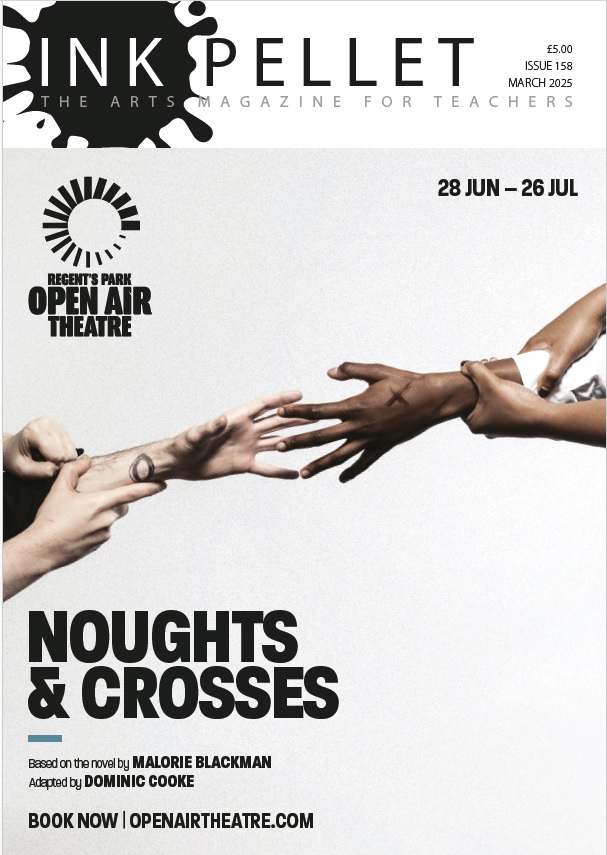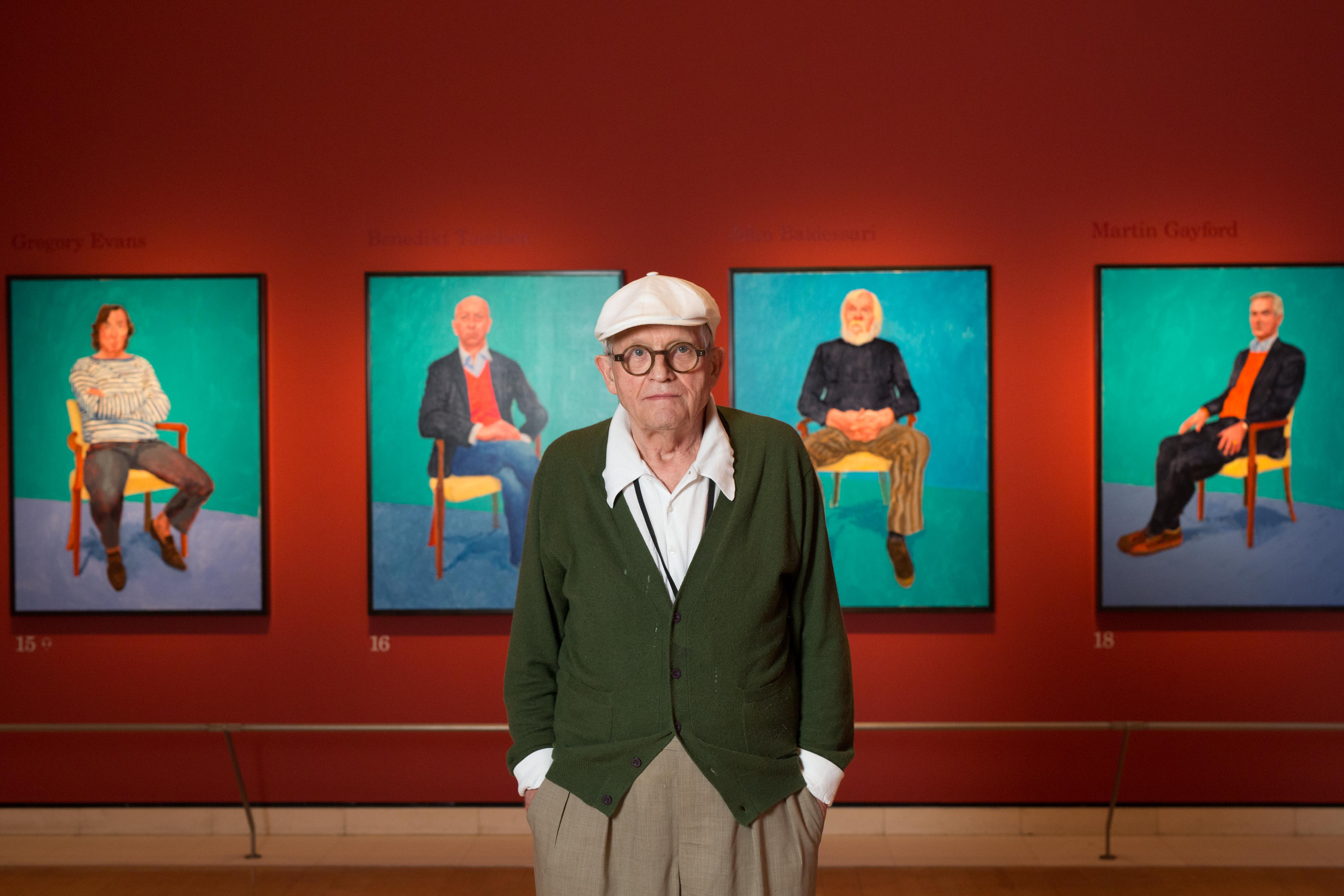Graham Hooper left the sanctuary of his garden this summer to visit two contrasting exhibitions of portraiture…
At last, the Summer has arrived, and a chance to finally sit down for a while without interruption. I find my favourite chair, position it with care to make the most of the light, and stare into the middle distance. Picture it: whole days can pass by, in complete silence, as I settle down into what quickly becomes a natural and my familiar holiday pose.
For a photographer and a teacher an hour can feel like a very long time, never mind twenty-four, but David Hockney – one of Britain’s most renown and celebrated artists – has spent the last two and a half years making 82 paintings of family and friends, as his current exhibition at the Royal Academy in London, “David Hockney RA: 82 Portraits and 1 Still-life”, clearly demonstrates. After a brief and wholly unusual period of inactivity following a stroke, he has been back working again, as intensely as before, but this time leaving behind the Yorkshire landscapes that had occupied him previously. These figure studies are a return to Hockney’s first love – portraits. Family and friends, visiting his studio, have been invited to sit for up to three days. Whilst they are free to choose their outfit (he wants them to feel relaxed), Hockney has carefully controlled, indeed standardised, most other aspects; the chair, it’s angle and illumination, the background, even the canvas size is constant, though the posture has been negotiated.
The results on display around the walls of the three deep red rooms, each softly spot lit, feels a little like a rogues’ gallery. Some of the names might be recognisable; the odd artist, celebrity architect or LA socialite. The colours are shamelessly garish, it has to be said – pink and turquoise abound. It’s quite a strange experience. Each person sits in front of you, staring out, with differing degrees of interest. With the continuity of format subtle variations appear much more noticeable. One figure might lean slightly to the left, whilst others have arranged themselves confidently forward.
Other shifts in mood or attitude gradually reveal themselves as you walk around the spaces too. I can’t quite decide whether Edith Devaney is sad, weary or just plain old bored. Meanwhile, Frank Gehry, like his buildings, is all gentle curves and soft edges, and decidedly reflective. There is a sense of focus and concentration, on the part of both painter and sitter, and at times intrigue. Is Ian Gray about to stand or just getting comfortable? The most revealing comparison for me was seeing the first and last portraits, which straddle the entrance, effectively acting like brackets to the exhibition. Appearing in chronological order of being made as they do here, Hockney’s first foray into this project is much looser than the last. The application of paint understandably begins as less assured, though on second thoughts maybe it’s overly confident. The first figure sits, head in hands, as if despairing. The last is more controlled and all together tighter. It is these little details that bring this show to life really. Although the pattern on a tie, the play of light on a dress or the occasional object on the floor also brings some interest, not knowing almost any of the sitters makes relating to them, or frankly caring about them as people quite hard. They seem ultimately just people, probably successful and wealthy, but just people ultimately. Of course for Hockney, these individuals make up his entire social sphere, and network of relationships.
Hockney has evidently thoroughly enjoyed himself here, even if his models at times seem to have found the experience more demanding than they perhaps at first thought.
In the end I am left asking myself, if they weren’t painted by such a notable art world celebrity, if the colours were less dazzling, would I be as engaged? If I am honest the answer is probably not. There are better-painted portraits of more engaging sitters elsewhere. Before I leave, I seek out the singular still-life. It’s in position 34, between an Ayn Grinstein and a Jim McHugh. It’s a depiction of 2 lemons, 3 tomatoes, a bunch of bananas, an orange, a pepper and a pear on a blue wooden bench. Apparently it was made when one of the sitters failed to turn up…in case you’re interested?!
Hockney has called his paintings as ’24-hour exposures’ referencing both his continued relationship with photography, though they are not especially exposing. On the other hand, William Eggleston’s Portraits, on show just a 15-minute walk away from the National Portrait Gallery, are perhaps too revealing.
This exhibition of over 100 photographs by the infamous American colourist – some seen here for the first time or much larger than previously and with explanatory captions for the first time too – are a warts-and-all view of the same subject – family, friends and acquaintances. Taken over the last 50 or so years this is a significant survey of the photographer’s work, focussing as it does on people and faces. Whist some are clearly from the 1960’s they all feel fresh and lively, only the outfits or hairstyles dating them in any way.
We move from early black and white experimental images (using infra-red film in a nightclub to record late-night dancers, for instance) through to his iconic images from the 1970’s taken in and around his hometown of Memphis, Tennessee with all its famous associations and shared connotations. There is very recent work here too though – Eggleston is in his late 70’s and still going strong. He has been a powerful influence in the world of photography, for his distinctive style – perhaps best described as the sensitive snapshot – but for his approach as well; relaxed but intelligent. He is irrevocably linked to his particular use of colour, specifically dye-transfer process; a convoluted technique that involves producing three separate colour negatives and printing each with perfect registration to achieve intense colour rendering. The results are often impressive, to say the least. A few images of young men and women shot at night almost five decades ago look incredibly sharp and clear even by today’s standards, and exquisitely lit. They wouldn’t appear out of place upstairs in the National Portrait Gallery next to renaissance royals.
Now that colour photography, and especially this easy-going if poetic style, has become relatively commonplace it is easy to lose sight of Eggleston’s accomplishments. For all their laid-back feel (literally at times), they suggest a much more vigorous and strangely sustained sense of scrutiny and focus than Hockney’s 3-day paintings. There are some famous people here, just like at the Royal Academy; The Clash’s frontman Joe Strummer and Dennis Hopper both make an appearance. As the gallery director rightly says, “Eggleston has an uncanny ability to find something extraordinary in the seemingly everyday’. A harsh critic might have had the opposite to say of Hockney’s offering. These pictures are by turns otherworldly, intimate, beautifully inane and utterly bizarre.
Ordinarily I can find exhibitions of photographs fail to engage me fully or for very long. It’s often something to do with their smaller size (compared to paintings) and their sheer number. ‘Photograph fatigue’ can quickly set in. This show has a variety of sized images, displayed curiously not in rows or columns, though not without care and attention, and is just the right scale too. A variety of people have been noticed in various ways; posing and off-guard, together and alone, by day and at night, inside or outside. The overall effect is one of sympathetic consideration. This style is not a gimmick. He is inquisitive and his images revelatory without ever being disrespectful or pedestrian. The body of work represents a lifelong commitment to investigate and record people as they really are. Of course the colours and patterns of the furnishings and fabrics are unmistakeably Eggleston; they compliment and clash, warm and chill. Quite how he does it remains a mystery, though nothing feels overly clever. That is what makes these photographs so fascinating. I quickly got frustrated with wanting to read the captions as it disrupted my viewing of the pictures, which need no explanation or accompanying description in fact. Here is a woman in a floral dress, lying on the ground asleep or dead, holding a camera, arms outstretched, all but the camera in soft focus. What do they mean, what are they for, what do they do? I don’t care. I happily gaze and gawp. There is so much information in them; stories, characters, expressions, places, recollections, dreamily but astutely depicted. They are people like me, unique and ordinary, like all of us. We each spend our time pushing shopping trolleys or consoling a friend slumped on a sofa. This is our life, in all its daily, boring fun.
Sitting in the garden during over the Summer, I kick a ball around with kids, drink coffee and listen to cricket on the radio. I could be 82 different portraits in any 24-hour period, and it’s still life. I’d photograph it but Eggleston has kindly done so already.



